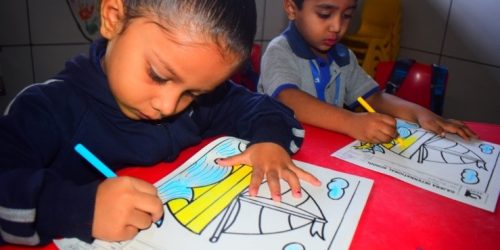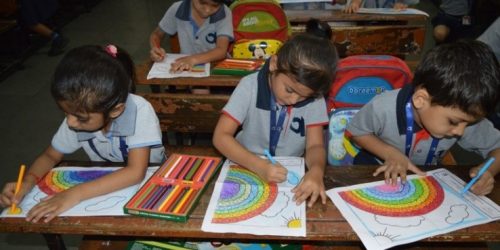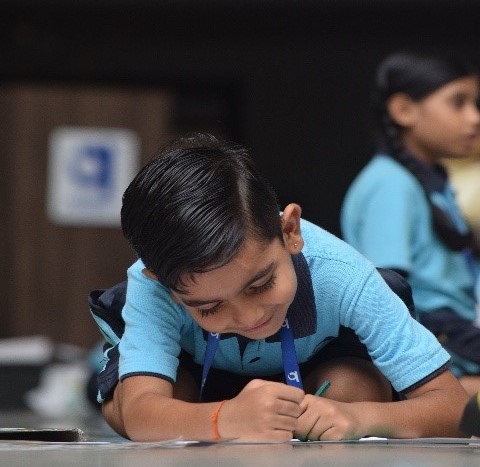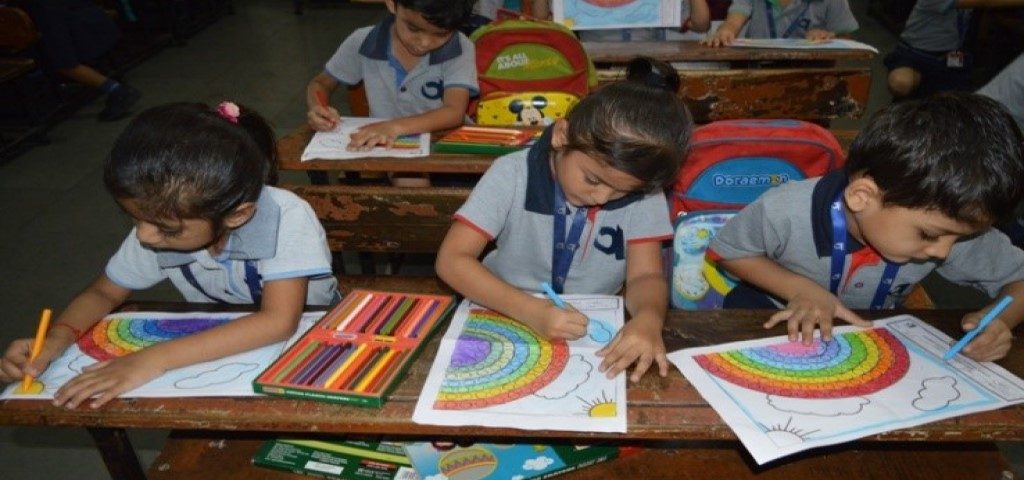The word “crayon” was mentioned for the first time in 1644 but using wax with colours was a method known to Ancient Egyptians. Artists invented the first pigments—a combination of soil, animal fat, burnt charcoal, and chalk—as early as 40,000 years ago, creating a basic palette of five colours: red, yellow, brown, black, and white.
Colour is perception. Our eyes see something (the sky, for example), and data sent from our eyes to our brains tells us it’s a certain colour (blue). Objects reflect light in different combinations of wavelengths. Our brains pick up on those wavelength combinations and translate them into the phenomenon we call colour.
One of the first things a child can do is pick up a pencil and start drawing. As new technologies are becoming much more accessible to children and their families, they bring with them new ways to learn important creative skills.


Crayons are relatively soft and blunt and because all of that perfect for little children who cannot hurt themselves with them nor make too much of a mess.
At the same time, learners and professional artists also use crayons because they come in a variety of colours, produce interesting textures, and are easy to use. But often crayons get a bad wrap. They’re usually the bottom of the barrel, the last resort of art-making tools.
Colouring inspires creativity in kids. A blank piece of paper and a box of crayons can inspire stories and pictures. Being creative allows a child to build their self-confidence in other areas, especially handwriting and pencil tasks.
Drawing is one of the early foundations of logical thinking or abstract thought. Whether the learner is still at home or school already, drawing helps them prepare for understanding more difficult concepts. Learning these creative ways of thinking at an early age readies a child for future education.
But what if learners could create beautiful pieces of artwork using only crayons?
Keeping this question in mind, Smakerspace is organizing an online Crayon Competition with the theme “World in my eyes” for the learners and makers who want to discover and sharpen their artistic talents-skills, using only crayon colours.
This competition will encourage learners to learn how to control the pressure of crayons, and it will be a great way to help learners develop fine motor skills.
This competition will enable learners’ imagination to become more active. Each time they draw they access their imagination and make physical representations of what’s in their mind. People’s imaginations have allowed them to create all of the things that we use and are surrounded by every day.
The key is focusing on the possibilities that crayons can offer and not thelimitations. And believe it or not, there are LOTS of possibilities when it comes to Crayons!


